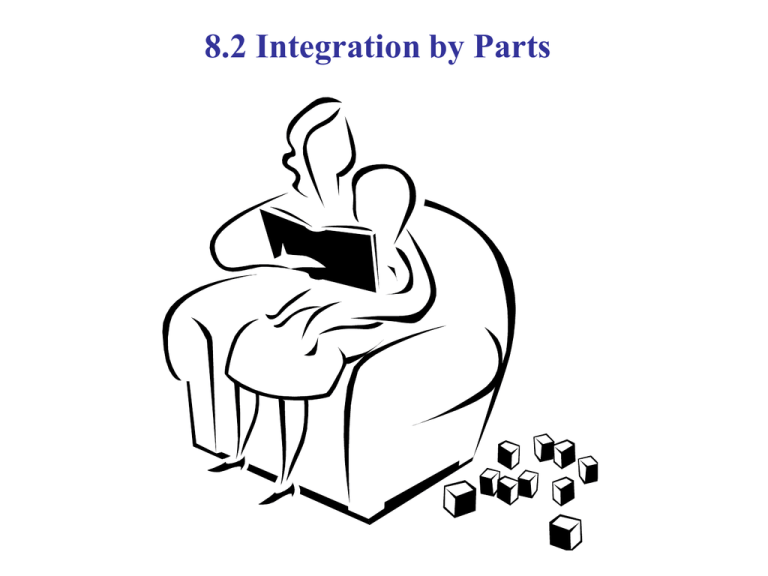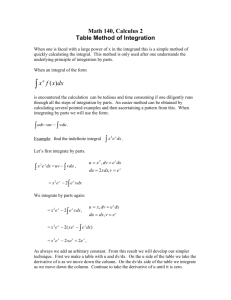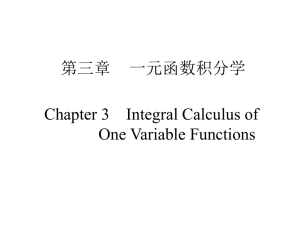8.2 Integration by Parts
advertisement

8.2 Integration by Parts Summary of Common Integrals Using Integration by Parts 1. For integrals of the form n ax x e dx , n x sin axdx , n x cos axdx Let u = xn and let dv = eax dx, sin ax dx, cos ax dx 2. For integrals of the form n x ln xdx , x arcsin axdx , n n x arccos axdx Let u = lnx, arcsin ax, or arctan ax and let dv = xn dx 3. For integrals of the form ax e sin bxdx , or e ax cos bxdx , Let u = sin bx or cos bx and let dv = eax dx Integration by Parts If u and v are functions of x and have continuous derivatives, then u dv uv v du Guidelines for Integration by Parts 1. Try letting dv be the most complicated portion of the integrand that fits a basic integration formula. Then u will be the remaining factor(s) of the integrand. 2. Try letting u be the portion of the integrand whose derivative is a simpler function than u. Then dv will be the remaining factor(s) of the integrand. Evaluate xe x dx To apply integration by parts, we want to write the integral in the form u dv . There are several ways to do this. x e x dx u dv e xdx 1xe x u dv u x dx dv xe dx x u dv Following our guidelines, we choose the first option because the derivative of u = x is the simplest and dv = ex dx is the most complicated. x e u x dx dv u=x du = dx v = ex dv = ex dx u dv uv v du xe x e dx x xe e C x x x 2 Since x2 integrates easier than ln x, let u = ln x and dv = x2 ln x dx u = ln x 1 du v x 3 u dv uv v du 3 dx dv = x2 dx x x 3 3 ln x 3 x 3 3 ln x x 2 3 dx x 3 3 ln x x 3 9 C x 1 3 x dx Repeated application of integration by parts 2 u = x2 x sin x dx v = -cos x du = 2x dx u dv uv v du x cos x 2 u = 2x 2 x cos xdx du = 2 dx x cos x 2 x sin x 2 Apply integration by parts again. dv = cos x dx v = sin x 2 sin xdx x cos x 2 x sin x 2 cos x C 2 dv = sin x dx Repeated application of integration by parts e x Neither of these choices for u differentiate down to nothing, so we can let u = ex or sin x. sin xdx Let’s let u = sin x v = ex du = cos x dx dv = ex dx x du = -sinx dx dv = ex dx e sin x e cos x e sin xdx x x v = ex u = cos x e sin x e cos xdx x x e x sin xdx e sin x e cos x 2 e sin xdx x x e sin x e cos x x x x 2 C e x sin xdx











